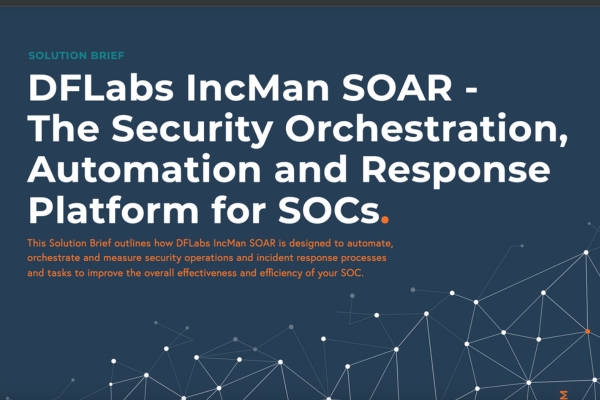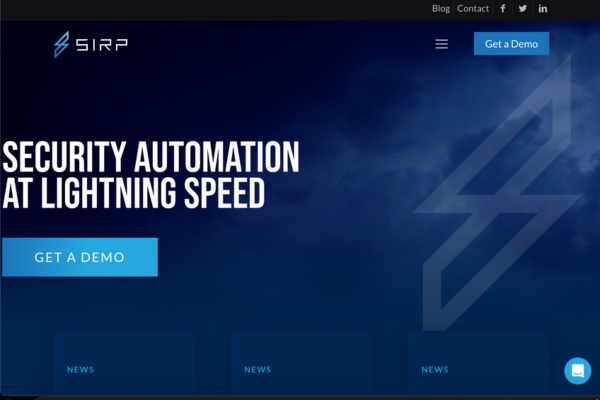

Updated · Feb 11, 2024
Updated · Oct 25, 2023
Raj Vardhman is a tech expert and the Chief Tech Strategist at TechJury.net, where he leads the rese... | See full bio
April is a proficient content writer with a knack for research and communication. With a keen eye fo... | See full bio
With 800,944 cybercrime complaints in 2022, security tools like SOAR are now crucial. The sudden growth in internet crimes led the world to invent this innovative system.
Using SOAR, security teams can detect, investigate, and prevent all types of cyberattacks. This tool automates response and alerts the security system of the device.
Read more on how SOAR functions in cybersecurity.
|
🔑 Key Takeaways
|
SOAR means Security Orchestration, Automation, and Response. It refers to a program stack that reduces time-consuming security processes for companies.
 |
“[...] technologies that enable organizations to collect inputs monitored by the security operations team.” |
SOAR helps define incident analysis and response procedures in a digital workflow format. To do this, SOAR has essential components.
These are:
 |
Security Automation Security automation allows a system to run an action independently. SOAR automates responses and alerts to any incident or issue. It removes the time-consuming step of responding to security threats. |
 |
Security Orchestration Orchestration refers to bridging different tools and strategies. This makes data on security processes shareable. Such a component allows SOAR tools to respond to an attack as a group, which is vital for large-scale automation activities. |
Icons by Flat Icons
To further understand how SOAR works according to these two components, Check out IBM Technology’s video below:
SOAR increases a system’s potential to achieve effective incident management through its automation and orchestration. This technology is capable of keeping systems protected and alert.
Here are some of the things that SOAR technology can do to help the system security:
1. Automate security workflows
SOAR can automate workflows to reduce manual effort and increase speed. From threat detection, response, and rehabilitation, SOAR removes time-consuming and speeds up more.
|
📈 Market Trends Protection against online threats is expensive. As a result, 69% of businesses cannot sustain cybersecurity. SOAR's security automation can help lessen these expenses since it only needs minor human supervision. |
2. Faster Responses
SOAR tools can reduce a system's response time, which results in a more accurate and faster resolution to any threat incidents.
It also removes the repetitive task of managing threats. This lessens the time to devise a solution to an incident.
3. Provides Greater Insights on Risks
Since SOAR tools prevent evolving attacks, it lets the team focus on investigations that boost data extraction from an existing virus.
While SOAR can do all those things and more, it still does not replace human actions. Excessive reliance on SOAR tools is not recommended as they have drawbacks, just like any other cybersecurity tool.
These are the usual disadvantages of using SOAR:
4. Need for Expert Assistance
While SOAR is a great tool, it still needs the support of experienced professionals. Despite its security automation feature, SOAR cannot fix all issues independently.
Moreover, SOAR can be complex for beginners. This means you will undoubtedly require help from experts to maximize the system’s features.
5. Over Confidence in SOAR tools
It can be ironic, but trusting SOAR alone increases the risk of cybersecurity threats.
Since SOAR’s focus is incident detection and response only, you may have to employ another tool to respond to existing threats that passed SOAR’s detection and initial response.
6. Unreasonable Expectations
SOAR is an efficient tool for detecting and rehabilitating threats. However, it is not a perfect mechanism yet. It cannot always identify and resolve every risk.
|
🔓 Security Note Despite its automation component, SOAR is not a 100% independent tool. Having a security team to manage how SOAR handles threats is still best. |
The main goal of SOAR is to strengthen the Security Operations Center (SOC), allowing security teams to automate parts of their workflow.
Other than this, SOAR Continue to read more on the benefits and significance of SOAR:
Out of over 30,000 cyberattacks every day, 43% of them are small businesses. With such risks, SME owners should consider using SOAR as protection.
SOAR improves the ability to detect and respond to a cyberattack before it can cause any damage.
95% of all system data becomes prone to breaches and theft without SOAR tools. Thus, this tool is crucial in protecting sensitive information from potential threats.
With SOAR, the security team can go to one place to access information. It provides all the data needed to investigate, and they can see all the figures in just one place.
|
🎉 Fun Fact Unprotected data can lead to severe financial damage since a data breach costs $4.35 million. With SOAR, you can lessen the risks and avoid high expenses from compromised or stolen data. |
SOAR can manage alerts from different sources and determine threat levels.
It can identify low-level alerts and work on them without human action, reducing the alert volume. It can also assist the security team to deal with the high-level alerts.
The SOAR solution improves the dissemination of data collected. These also enhance the threat visibility and have efficient collaborations between the team.
SOAR is a fairly new technology. If you’re curious about how it started, check out the timeline below to discover the start of SOAR technology and how it will potentially evolve.

2015: The Beginning of SOAR Technology
SOAR started on the market in 2015. However, it launched with limited features.
The tool already has automation and orchestration features but for minor incidents only. Despite offering a time-saving method, it still required deep-scale investigation for high-level threats.
2019: SOAR Update and Improvement
By this time, only 5% of security teams used SOAR in their security operations. Gartner predicted that by 2020, security teams will be dependent on SOAR.
SOAR developed more in-depth cybersecurity tools, so many organizations started to appreciate the SOAR’s value.
2022: Further Developments to SOAR
Currently, SOAR platforms have started to offer more feature sets. It can now be used for conducting large-scale investigations with more significant incidents.
|
📈 Market Trends Swimlane's 2021 reports show that 46% of SOAR users are from organizations. The increased depth in SOAR features made it a tool feasible for long-term system improvement. |
SOAR in the Future Years
In the future, it will become inevitable not to use SOAR. This tool can continue to offer enhanced protection against cyber threats. Experts predict that SOAR will be able to develop and handle larger scales soon.
If you’re interested in employing SOAR to improve your system’s cybersecurity, here are some of the most popular tools that you can use:

Splunk is a SOAR platform that helps with repeatable tasks. It has various security products and automates the response process.
It helps the security team create better insights through its reports and features. Splunk also can detect and respond to external and internal threats.

Cortex XSOAR is a tool for enterprise security operations. The wide range of security products gives users an automated response process.

IBM Resilient is a machine-learning SOAR platform with enhanced threat detection. This tool provides automated operations, enhances collaboration, and addresses threats faster.
With its cyberattack simulation feature, security teams can validate the playbook. It also tests the security system while addressing the issues.

DFLabs IncMan SOAR is a single-powered platform that detects various security incidents.
This flexible platform helps an organization respond to threats quickly. It offers detailed reports for clients to measure the security's effectiveness.

Offering out-of-the-box security technologies, SIRP works as an all-rounder SOAR. This tool provides a single control point, automation, and incident management platform.
SIRP enhances the data with intelligence and analysis solutions. With this feature, it offers a more effective response to the attack.
Security Orchestration, Automation, and Response (SOAR) is essential in the Security Operation Center.
It programs systems to provide quick responses against threats, easing the burden of the security team by automating time-consuming processes.
SOAR also improves the effectiveness of continuous and repetitive tasks, allowing security teams to focus on more critical issues.
SOAR can function without SIEM, meaning you can use it as a replacement. However, the two can work together for better results.
Many companies offer SOAR. However, CyberBit, Splunk Phantom, and Swimlane are the top SOAR vendors.
Your email address will not be published.
Updated · Feb 11, 2024
Updated · Feb 11, 2024
Updated · Feb 08, 2024
Updated · Feb 05, 2024



